If you’re looking for ways to make your quad go faster, this is where you want to be. I will show you the most common ways riders make their ATVs faster, I’ll also offer some helpful tips along the way.
With more horsepower and torque, you will notice better acceleration and a higher top speed from your quad. But with the engine working harder, are these upgrades safe for your ATV?
Yes, they are. Anytime you ride your quad faster or harder than normal you are increasing the wear and tear that happens over time. You can limit these effects by performing routine maintenance though.
Be careful if you have factory warranty though. Many alterations will void a warranty, so first check to make sure if you don’t want your warranty to voided. If you do have a warranty, and want to keep it, it may be best to just not modify the machine at all until the warranty has expired.
Overall, these upgrades are considered safe and many riders have been making these changes to their quad for years and years. Lets start by looking at the easiest and cheapest ways to make your ATV faster.
A quick and easy change you can make, is to start using higher octane fuel. A lot of quads don’t require that you use higher octane fuel from the manufacturer, but it can help increase the performance of your engine.
If you can, don’t use ethanol based fuels and opt for the higher octane. It will cost a few more bucks than the cheap fuel, but you’ll certainly notice the difference when you hammer on the throttle.
Higher octane fuel burns cleaner, giving you better gas mileage and less corrosion to the mechanical parts of your fuel system. Sure the better mileage isn’t really noticeable in a quad, but the performance differences are there.
Some riders want even more of a boost than the fuel sold at a gas station, so they will add more octane to their fuel themselves. Here is a link to Boostane Professional Octane Booster on Amazon. This is one of the most popular and widely used octane boosters out there, but really any octane booster will work.
You can just add a little bit to the gas in your quad and mix it up a bit by rocking back and forth on the machine. I like to pre-mix it in a gas can before putting it in the gas tank, that way I can get the measurements exactly right.
You should be checking your air filter regularly and cleaning it when necessary. If the air filter starts getting clogged up, it will affect the amount of air the engine can use to run. Riding with a clogged air filter is almost like choking your engine. Check out this article on
How To Properly Clean An ATV Air Filter if you need a guide.
Riding with a clogged air filter is almost like choking your engine. Check out this article on
How To Properly Clean An ATV Air Filter if you need a guide.
A lot of riders will also upgrade their air filter to a lifetime replacement air filter like this K&N Replacement Air Filter on Amazon. Just make sure you type in your make and model and get the right one for your machine.
The increased air flow these filters allow will let your engine receive more air. More air fuel mixture means more power. This is one of the easiest ways to get more performance out of your machine.
On most ATVs, if you look on the right side of your handle bars where your throttle is, you’ll see a governor. On the governor, there will be a screw sticking out, that’s your throttle limiter. The throttle limiter will limit the amount of gas you can give your engine while riding.
Make sure the screw is turned all the way out, if you want to be able to give max throttle.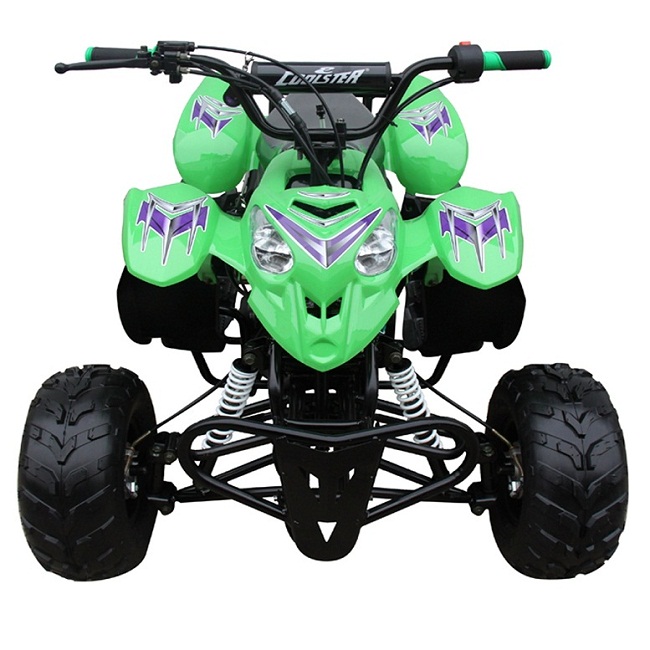 To adjust this, simply loosen the lock-nut holding the throttle limiter screw in place, adjust the screw, and tighten the lock-nut back down.
To adjust this, simply loosen the lock-nut holding the throttle limiter screw in place, adjust the screw, and tighten the lock-nut back down.
A lot of people will screw the throttle limiter in if they have children that might be able to ride the machine. Double check the throttle limiter screw to make sure you’re getting the max your engine will allow.
Of course tire pressure will play a role depending on the type of terrain you’re riding in. When riding in sand or snow, a lower tire pressure will make you faster, but on flat hard surfaces, a higher tire pressure would help more.
I would suggest riding at around 5 psi as a good all around number. But to find an exact tire pressure for you and your terrain, check out my ATV Tire Pressure article where I go into a lot more detail about tire pressure and terrain differences.
As far as tire weight goes, you’ll really be looking at changing out the wheels to help with that. I mean sure, don’t expect big heavy mud tires to make your quad go faster, but really the biggest issue I see here is people with steel wheels.
I mean sure, don’t expect big heavy mud tires to make your quad go faster, but really the biggest issue I see here is people with steel wheels.
You’ll want to get yourself some light weight aluminum wheels if you want to make your quad faster. A nice set of performance tires won’t hurt either. Tire size might make a difference too, depending on what you’re going for.
Check out these All Terrain ATV UTV Tires made by SunF here on Amazon if you’re in the market for tires. Make sure to get the right tire size for your ATV and your rims.
If you want faster acceleration, go with a smaller tire. If you want more top speed, go with a larger tire. Tire size is very similar to changing out your sprocket for gearing. A larger tire will take more power to turn it, but will cover more ground per revolution. I usually don’t change the tire size unless I am trying to Increase My ATV Ground Clearance.
Adding a nitrous kit to your ATV can give you a good boost of speed when you really need it. They aren’t really all that hard to install or use either. Sure every machine is different, and you’ll want to get a setup you feel safe with. But a lot of people have getting some extra speed this way.
They aren’t really all that hard to install or use either. Sure every machine is different, and you’ll want to get a setup you feel safe with. But a lot of people have getting some extra speed this way.
There are a few different types of nitrous setups you could go with, for example, wet or dry. To learn more about nitrous check out my How And Why To Use Nitrous On An ATV article. In that article I walk you through the process so you can decide if it’s right for you.
Upgrading the exhaust on your ATV can get expensive and require some work. But it’s a sure fire way to increase the performance of your quad. With more air being able to leave the engine, it can pull more air in. This setup is great to do in parallel with a high flow air intake system.
If you can’t afford to do the entire exhaust system from the headers on down, you could always get a performance slip-on exhaust. This won’t increase horsepower as much as an entire performance exhaust system will, but it will give you a bit more horsepower.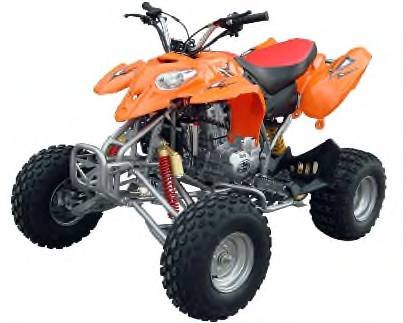
Here’s an example Performance Exhaust System For A Honda TRX 300EX to give you an idea of what you’ll need. You are looking for a kit that has the exhaust parts coming from the engine all the way to the muffler and exhaust tip.
Usually the performance exhaust systems will be a bigger diameter than stock, or will be cone shaped to increase in diameter slowly. This allows more airflow through the engine. With more air fuel mixture, you will feel more power and speed when riding.
To change the gear ratio you would need to buy a new front or rear sprocket and replace your existing one. A lot of riders do what is called ‘gearing down’ which is when you get a larger rear sprocket to increase acceleration. This will cause your top speed to drop though. To learn more about gear ratio and how to adjust yours, check out my Complete Gear Ratio Guide.
To ‘gear up’ you would get a smaller rear sprocket which will increase your top speed but decrease your acceleration.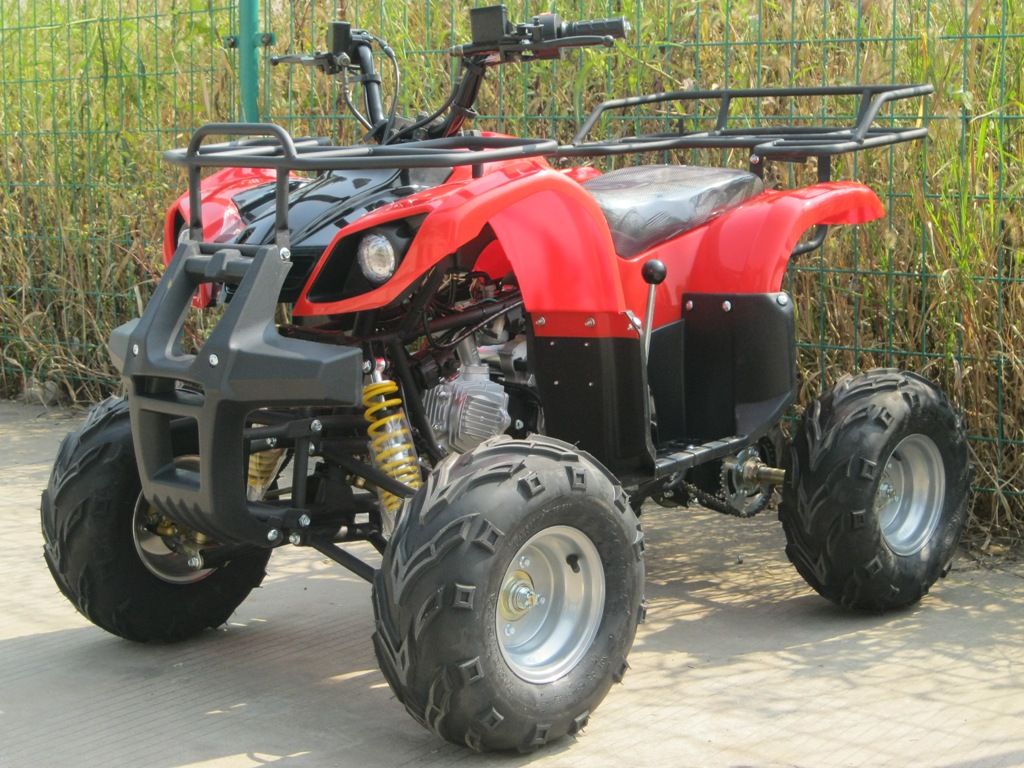 You can find most sprocket sizes front and back online now for a pretty good price.
You can find most sprocket sizes front and back online now for a pretty good price.
The thing you have to decide is, do you want an acceleration increase or a top speed increase. I don’t typically mess with the gearing of my quads, but I have for particular ATVs that I only ride through trails and never reach top speed. In those cases, gearing down makes sense to give you a quicker jump from the start.
If you decide you want to change a sprocket to adjust your gear ratio. I wrote an article with step by step instructions for you, showing you exactly How To Change The Chain And Sprockets On An ATV.
Installing a big bore kit can be a lot of work, but will give you a huge boost in performance. Acceleration will be quicker and top speed will increase as well. You’re basically upping the cc of your engine.
With most big bore kits, you will be replacing the piston and the cylinder with a larger size. This allows for more air fuel mixture to enter the combustion chamber resulting a huge performance boost to your quad.
Here’s an example Big Bore Kit For A Honda TRX 400EX on Amazon to give you an example of what you’re getting yourself into. You will most likely get all the piston rings and gaskets needed to do the swap with any decent kit.
There you have it, the most common ATV upgrades to increase performance and get some more speed out of your machine. If you’re looking for the cheapest and easiest way to increase performance, I would suggest checking your limiter screw, upgrade to a K&N air filter, use octane booster, and get a slip-on performance exhaust.
Even though you could make all these adjustments to your quad, a lot of riding faster has to do with skill. When you’re racing on track, being able to brake and corner properly is a big deciding factor in most races. Check out my How To Corner On An ATV and How To Brake Properly On An ATV articles to get some tricks and tips on how to ride better.
As always, wear proper safety gear when riding, especially if you’re modifying your quad for speed. To check out some safety and riding gear that I’ve tried and tested for you, visit the Recommended Gear section of this site.
To check out some safety and riding gear that I’ve tried and tested for you, visit the Recommended Gear section of this site.
Sharing is caring!
If you own an off-road utility vehicle then you know the need for speed is a real thing. It seems like when you first buy your ATV, UTV or Dirt Bike it is exactly as fast as you want it to be. That feeling fades over time and is replaced with the need for speed as you become more comfortable with the vehicle.
If this describes you, then you are at the right place. In this article we searched the web and used our experience to come up with a list of six effective ways to improve the top speed of your quad. This includes both engine performance upgrades as well as adjustments to your chain, gears and tires. Also, make sure you pick the best atv batteries for top performance.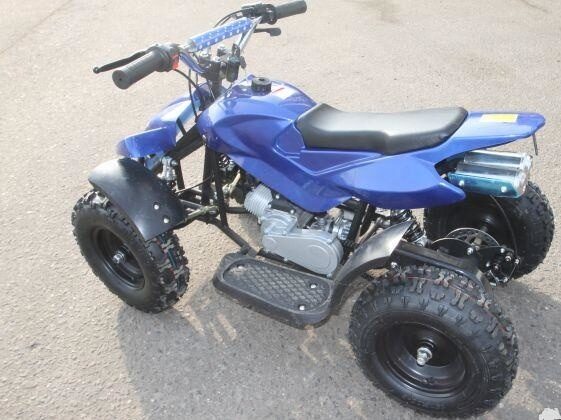 Take a moment to read the information below and let us know your thoughts at the bottom of the page.
Take a moment to read the information below and let us know your thoughts at the bottom of the page.
Motor/Throttle Adjustments
The simplest method of increasing speed on your off-road utility vehicle is to adjust the throttle screw. Your throttle lever attaches to the throttle cable and sends power by pivoting on a screw, pulling the cable and opening the throttle. 99% of dirt bikes and quads have a throttle limiter screw which is used for adjusting the amount of movement in the lever. Turning the screw clockwise pushes the screw into the throttle lever housing and limits the amount the lever can be pushed. Turning the screw counterclockwise backs the screw out of the housing and allows the lever to be pushed further, and in turn allows the vehicle to rev higher. Higher RPM = More Speed!
Motorcycle USA
In the most simplest terms, the engine in your off-road vehicle works by pulling air in, mixing it with gas, compressing and exploding it and then releasing the exhaust.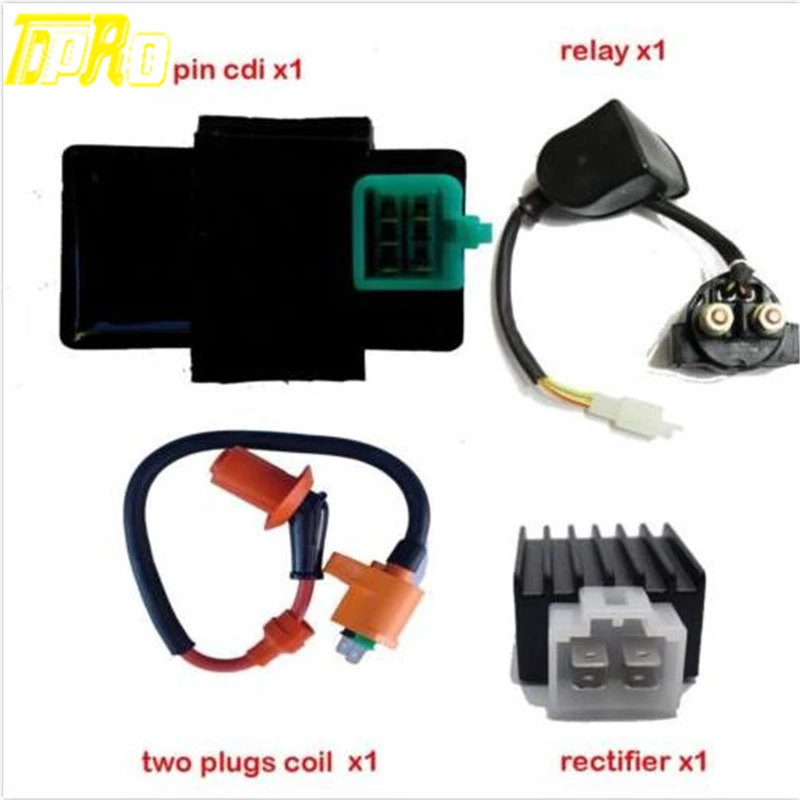 If you think in these terms, then understanding how to improve the engine performance and top speed becomes much simpler. Your first option, and often the cheapest and easiest when it comes to engine performance is to improve the airflow. Increased airflow, combined with more gas, creates additional power and top speed.
If you think in these terms, then understanding how to improve the engine performance and top speed becomes much simpler. Your first option, and often the cheapest and easiest when it comes to engine performance is to improve the airflow. Increased airflow, combined with more gas, creates additional power and top speed.
You have two options when it comes to improving the airflow: Get a Better Flowing Air Filter or Reduce the Impedance of Air. Most stock air filters are design with the main purpose of limiting the amount of contaminants that enter the combustion chamber. They complete this task by using thicker and more dense foam to filter the air, but this reduces air flow and limits power. In conjunction, a stock air box is designed to reduce the chance of water or dirt gets to the air filter, but this reduces airflow and power.
The world of aftermarket air filters is large and can be confusing when deciding what you need.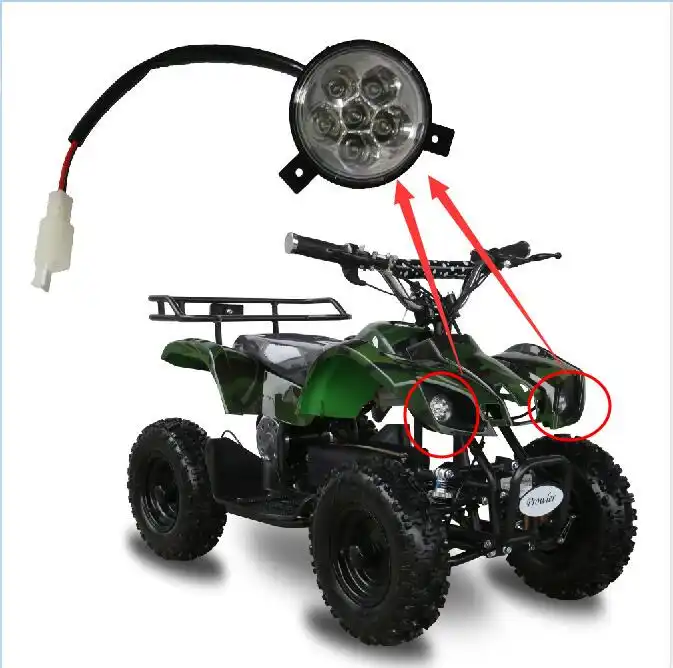 Big players like K&N and Unifilter provide your safest alternative to a stock air filter set up. Both of these brands are known for their quality and performance (K&N has a huge market presence with automobiles), and they publish tests consistently that prove they work. With improved air flow, you should expect around a 2-4% increase in top speed when paired with the appropriate jetting.
Big players like K&N and Unifilter provide your safest alternative to a stock air filter set up. Both of these brands are known for their quality and performance (K&N has a huge market presence with automobiles), and they publish tests consistently that prove they work. With improved air flow, you should expect around a 2-4% increase in top speed when paired with the appropriate jetting.
Your other option to increase airflow is to open up the air box. Stock air box applications are sealed to protect the air filer, and have one entry point for air (normally under the gas tank). This restricts air flow, which in turn restricts power. Opening up the air box (using one of the methods below) will increase air flow but also puts you at a higher risk of water entering the intake and possibly hydrolocking the motor. This upgrade is most popular among sport and racing quad owners because of riding through deep water or heavy rain. Check out some of the examples below to see what I am talking about.
Check out some of the examples below to see what I am talking about.
Teryxhq
ATV Connection
The other simple method to improve your engine performance is by increasing the exhaust flow. This can be done upgrading your exhaust system or lessening the restrictions within your stock set up.
Depending on the engine size and RPM, the amount of exhaust produced will differ. Most ATV, dirt bikes and UTVs are designed with an exhaust system that has been tested extensively and can handle the stock performance of the motor, but when you start upgrading other parts of the motor you limit their potential by not upgrading the exhaust too. If you increase the air flow into the engine, increase the engine displacement, or change the air/fuel ratio (jetting), you need to adjust your exhaust system to handle the increased exhaust production. A restrictive exhaust system can impact performance and also cause the engine to backfire.
Don’t get me wrong though, exhaust upgrades don’t have to be done ONLY when other parts are upgraded. Just upgrading the exhaust with other any other upgrades will still improve your performance. Most upgrades typically result in improvements of 2-4% over stock speed.
Just upgrading the exhaust with other any other upgrades will still improve your performance. Most upgrades typically result in improvements of 2-4% over stock speed.
Companies like FMF and DG provide exceptional aftermarket exhaust systems for most ATV, dirt bike and UTV models.
Aliexpress
A lot of time is spent fine tuning an engine at the factory to maximize a potential. That fine tuning however is with all stock components, so that tuning must occur again when you make alterations to stock compnents.
Most carburetors include 2 jets, a main and idle jet. The idle jet provides fuel to the carburetor when the vehicle is at idle, and the main jet provides fuel at all other times. When you change the amount of air flowing in or out of the engine, you need to adjust the fuel ratio by changing the jets. More air requires more fuel to maintain the stoichiometric ratio that combusts best in the cylinder.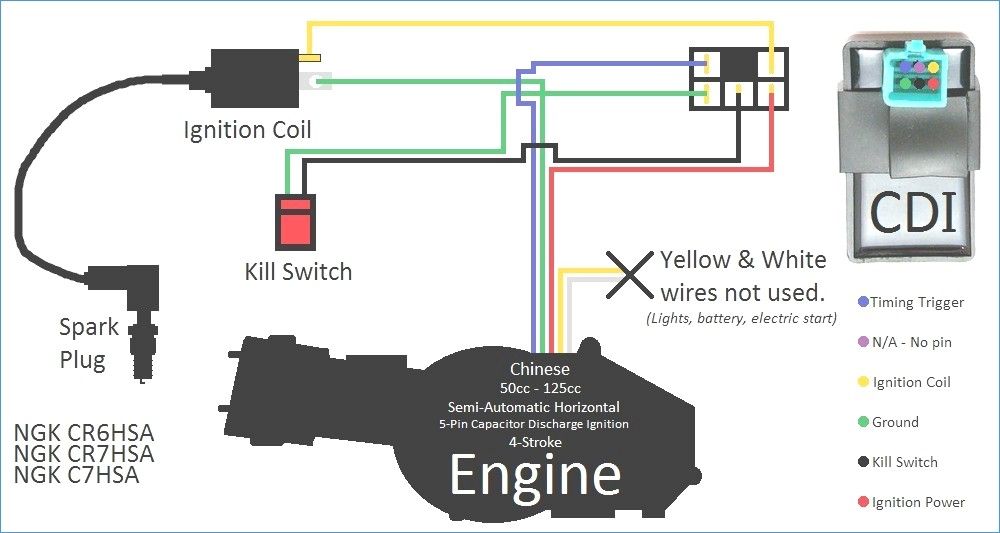
You can find different size jets on eBay and Amazon for almost any carburetor, choosing the right one however is where science is needed. Your best bet is to look up the stock size jet for your carburetor and then move up from there. I prefer using Dynojet Kit when re-jetting a carb, because you get a multitude of jet sizes to test and most kits include a chart for deciding on the proper size. For example, on my Yamaha Warrior the stock size jet was 155. After modification of the exhaust and intake, I increased the size to 157 to get the best performance.
Amazon
Drivetrain/Tire Adjustments
Assuming all other things stay the same, changing the tire size of your off-road vehicle will increase the speed. The amount that your top speed will change is directly related to the difference between the old tire circumference and new tire circumference. Here is a simple formula for estimating the top speed after a tire charge size change:
This method is best used on your ATVs and UTVs because increasing tire size requires more space under the vehicle.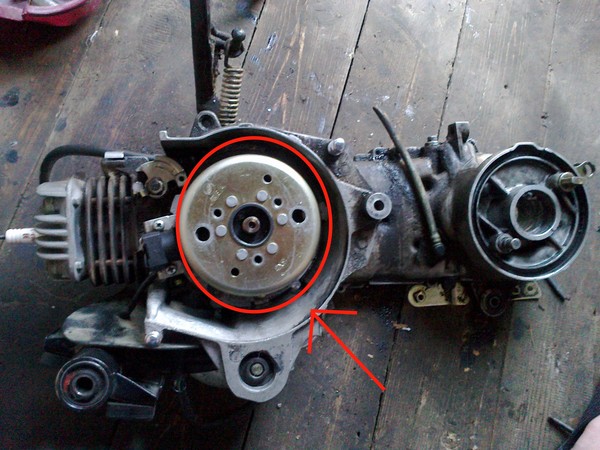 Dirt bikes are not ideal because the front fork and rear swing arm don’t allow wider or taller tires with heavy modification. ATVs and UTVs are easier to lift with spacers and new shocks. To be safe, look for tire dealers who can assist you in determining the proper tire size for your off-road vehicle.
Dirt bikes are not ideal because the front fork and rear swing arm don’t allow wider or taller tires with heavy modification. ATVs and UTVs are easier to lift with spacers and new shocks. To be safe, look for tire dealers who can assist you in determining the proper tire size for your off-road vehicle.
Similar to tire size, utility vehicles that use a chain and sprocket in their drivetrain can gain speed through adjusting the sprocket ratios. You can adjust either the front or rear sprocket, as long as the ratio of teeth increases. For instance if your current set up has a 14 tooth front gear and 47 tooth rear gear, you will either need to increase the front gear size or reduce the rear gear size in order to gain speed. The current set up has a ratio of 3.357. If you drop down to 13 teeth up front the ratio increases to 3.615 which is a 7.7% increase in top speed. If you increase the rear sprocket size to 48, the ratio increases to 3.428 which is a 2.1% increase in top speed. Here is a good calculator for estimating new top speed after a sprocket change.
Here is a good calculator for estimating new top speed after a sprocket change.
As you can see, adjusting the front sprocket will gain more speed, quicker while the back sprocket will allow you to fine tune your top speed. You also have to remember that changing the sprocket sizes has an effect on your torque. There is an inverse relationship between the top speed and torque when adjusting the sprocket sizes. Increase the speed and you decrease the amount of torque.
Motosport
Sort: DefaultName (A - Z)Name (Z - A)Price (low > high)Price (high > low)Model (A - Z)Model (Z - A)
On the page: 25285075100
Available
Available
Out of stock
Out of stock
Out of stock
Out of stock
Out of stock
YACOTA 50 9 ATV0003
Engine type: 4 stroke
Displacement: 45 cc see
Max. speed 35 km/h
58600 rub.
Out of stock
Out of stock
Available
Available
Out of stock
Out of stock
Showing 1 to 13 of 13 (total 1 pages) sports for children and teenagers.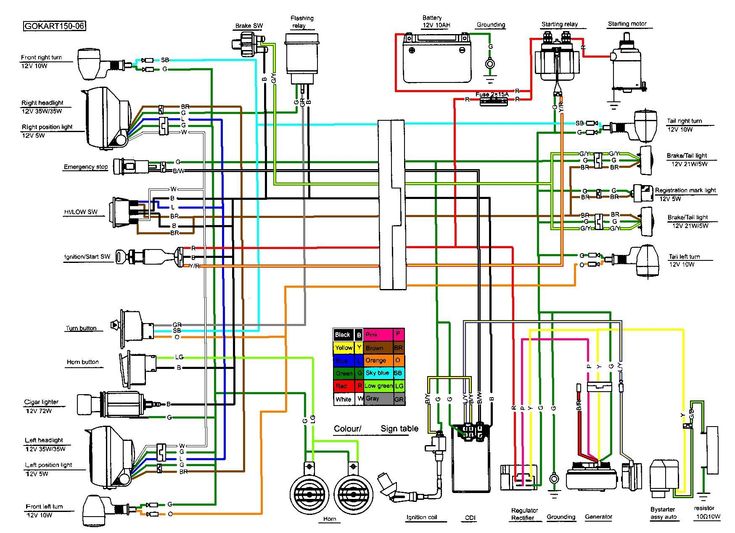 They have the same function as ATV for adults, but differ in size and engine power. Petrol ATV 50 cubes for children is not a toy, it is a sports car on which you need to drive with caution and wisely. We would like to introduce you to technical characteristics and differences of children's and teenage ATVs so that you knew what to pay special attention to when purchasing for a child vehicle.
They have the same function as ATV for adults, but differ in size and engine power. Petrol ATV 50 cubes for children is not a toy, it is a sports car on which you need to drive with caution and wisely. We would like to introduce you to technical characteristics and differences of children's and teenage ATVs so that you knew what to pay special attention to when purchasing for a child vehicle.
The main features of ATVs on gasoline:
 Parts of a two-stroke motor are lubricated fuel mixture in a ratio of 1:25 (gasoline and special oil). Pure gasoline pour without adding oil into a children's ATV with a two-stroke engine it is forbidden.
Parts of a two-stroke motor are lubricated fuel mixture in a ratio of 1:25 (gasoline and special oil). Pure gasoline pour without adding oil into a children's ATV with a two-stroke engine it is forbidden. 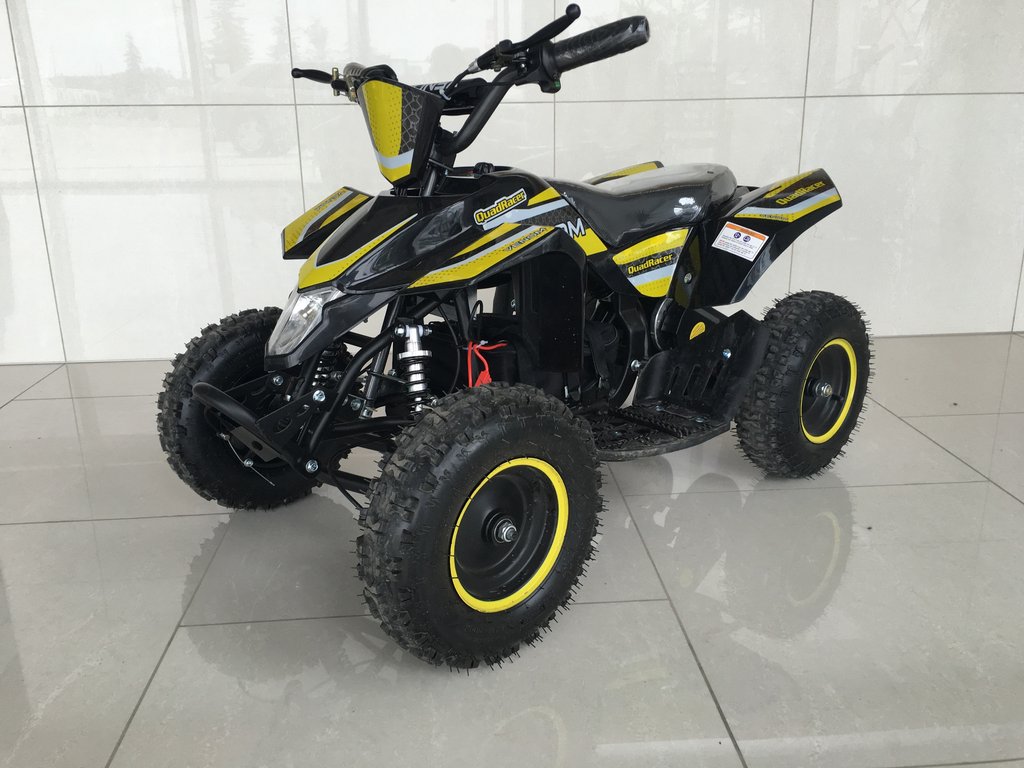 Some mini cars have parental control panel, thanks to which you can control the tool on distance up to one hundred meters. This device can be launched from a distance or turn off the engine, arm or disarm.
Some mini cars have parental control panel, thanks to which you can control the tool on distance up to one hundred meters. This device can be launched from a distance or turn off the engine, arm or disarm. 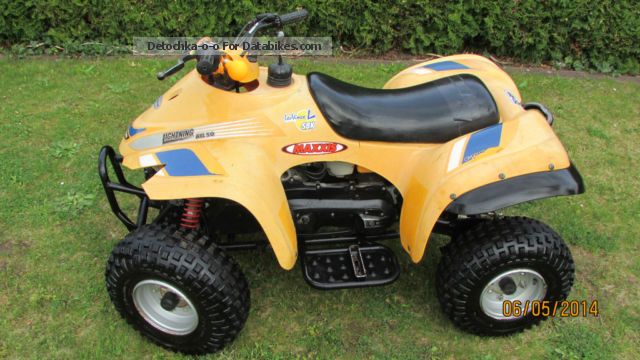 Learning to ride should be gradual.
Learning to ride should be gradual. ATV 50cc - a great opportunity for your child to learn adult technology from an early age. Miniature all-terrain vehicle without problems will overcome impassability at any time of the year. Children on it will be themselves feel like pioneers, conquering forest paths, alleys of the park. ATVs on gasoline for children develop the child's logic, reaction and coordination of movement, and also the confidence of being in the saddle.
The ATV 50 SUV is equipped with:
• an automatic transmission that makes uncomplicated management;
• 3 to 8 horsepower engine, which helps successfully pass various descents and ascents;
• Reinforced frame for increased durability constructions;
• rubber wheels with treads.
Children's SUV with an engine capacity of 50 cubic meters is available for children from 3 to 8 years old, but it is perfect for a teenager if his weight is not will be more than the permissible load of the vehicle. ATV Models presented cubature are quite diverse and their limit load capacity is 45 - 120 kilograms. Small dimensions make it easy SUV transportation.
ATV Models presented cubature are quite diverse and their limit load capacity is 45 - 120 kilograms. Small dimensions make it easy SUV transportation.
50cc ATVs are a unique mode of transport and for sports and travel, and also this is your own car for children. For SUVs it is easy to drive where the car gets stuck, but at the same time it is easier to control, than a motorcycle.
Children's ATV is a great gift for your child for his good behaviour. The cost of such pleasure cannot be compared with happy delight of your baby. Quality equipment has been certified by throughout the country. The cost of each vehicle depends specifically from the manufacturer, model and specifications. Thanks to our pricing policy you have a great opportunity to buy a vehicle for your child at an affordable price. Thoroughly inspected before shipping to buyer. the whole set.
Please read the rental rules before you travel.
You agree that the maximum speed will be limited for safety reasons.
The total load on the ATV must not exceed 150 kg.
While driving, the driver must hold the steering wheel firmly, the passenger must hold the special handles.
When cornering, move (tilt) the body in the direction of the turn.
When tilting the ATV, move (tilt) the body in the direction opposite to the slope.
Always keep your feet on the footrests when moving, even when tilting.
We provide a free ATV driving instruction before you start using it.
If you notice fluid leaks and/or other problems, stop the engine immediately and inform your instructor.
If you detect the operation of warning signs on the instrument panel (during the initial briefing, you will be shown control devices that you should pay attention to throughout the trip), immediately turn off the engine and inform the instructor.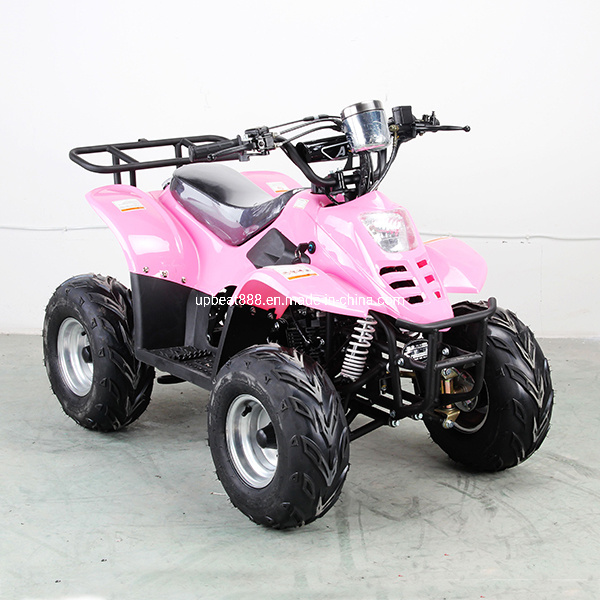
Before and after the rental, the ATV is checked in your presence for breakdowns and damages, after which the acceptance certificate is signed.
ATV ride, always wearing helmets only, protective suits are provided free of charge on request.
In the event of a breakdown or accident, inform the instructor or contact him by phone.
If the ATV is damaged due to your fault, you pay the cost of repairs and spare parts.
The time spent during the trip to fix problems that occurred through your fault is not compensated.
Must be instructed in how to operate the ATV before use;
You agree to follow the speed limit set by the guide (instructor).
Do not succumb to the provocations of other citizens to participate in the race; clashes and other actions that can directly or indirectly cause damage to property and citizens;
Do not interfere with your actions or omissions to comply with these rules.
Driving on highways and other public roads.
Towing other ATVs or any other vehicles.
Leave the ATV unattended.
Deep water crossings, fires, and areas of smoke or open flames are prohibited.
Gear change without stopping the vehicle.
Drunk or drugged ATV riding.
Intentional collision with other ATVs.
Intentional collision with obstacles.
Provoking others to collide.
Overtake the instructor and overtake ATVs in front.
Intentionally fall behind the column and then overtake the column at high speed.
Do not follow the instructions of the instructor.
Touch moving parts such as wheels, drive shafts, CVT pulleys, etc.
Talk aggressively, use profanity, and do anything that might disturb those around you.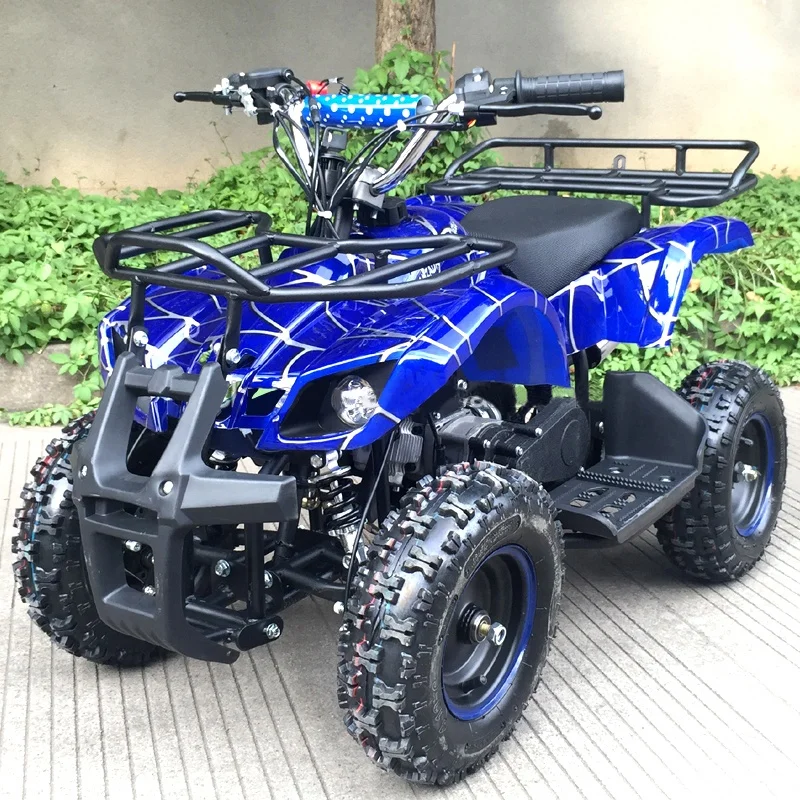
• Do not operate the ATV without wearing an appropriately sized crash helmet. It is also necessary to wear eye protection, (protective mask or goggles).
• Do not consume alcohol or drugs before or while operating an ATV.
• Always follow instructions and follow Instructor's recommendations.
• Before each use, make sure the ATV is in good condition and safe to ride. Always follow the rules and recommendations for driving given in the instruction.
• Always use extreme caution and drive slowly when driving in unfamiliar terrain.
• Always keep both hands on the handlebars and both feet on the footrests while riding the ATV.
• Do not operate the ATV on rough, slippery, damaged roads until you have learned and gained the practical skills necessary to control the ATV on such roads. Always be extremely careful when driving in such conditions.
• Do not operate the ATV on slopes that are too steep for the vehicle and for your experience.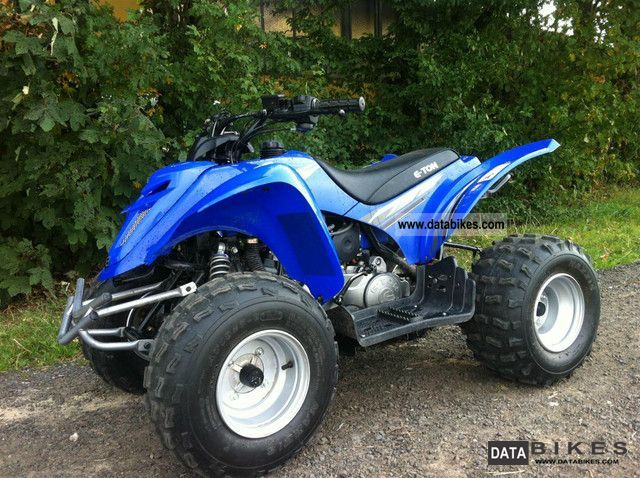 Practice on small descents before moving on to difficult ones.
Practice on small descents before moving on to difficult ones.
• Always follow the relevant instructions from the Instructor when entering the hill, check the road surface first, never enter the hill on a road that is too slippery or has a damaged surface. Shift your weight forward of the ATV, never suddenly open the throttle or change gears suddenly. Never drive up a hill at high speed.
• Always follow the appropriate instructions from the Instructor when descending and braking on the hill. Inspect the road carefully before descending. Shift your weight back, never go down a hill at high speed. Avoid going downhill at an angle that could cause the ATV to lean to the side. Go straight down if possible.
• Always follow the appropriate Instructor's instructions for crossing inclines. Avoid slides on excessively slippery or damaged surfaces. Shift your weight to the side of the lift. Never turn the ATV around on a hill until you have mastered the turning technique. On level ground, avoid crossing steep hills whenever possible.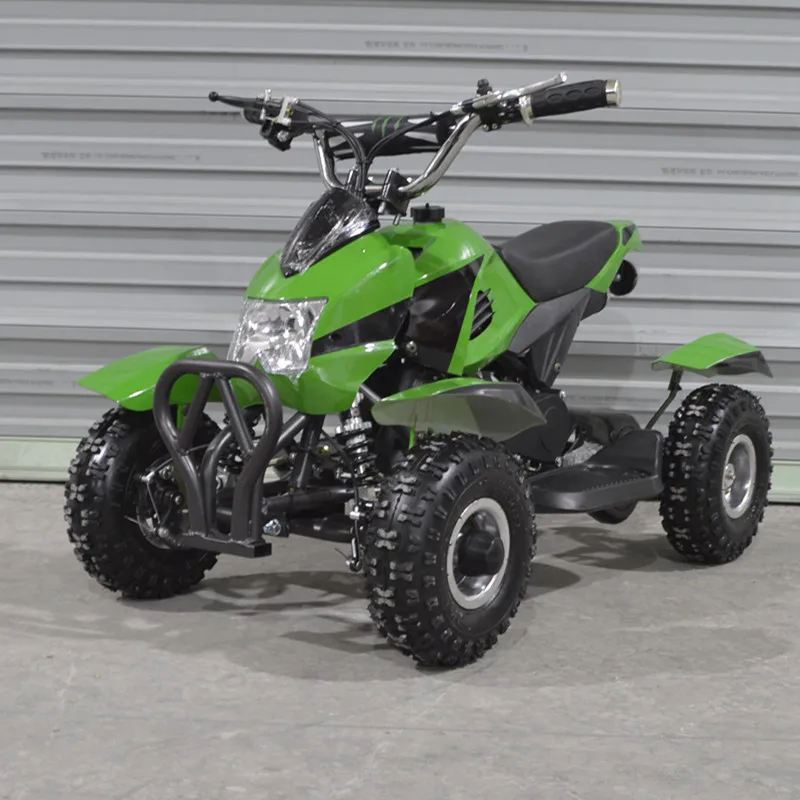
• To prevent the engine from stalling and the vehicle from reversing when entering a hill, use an appropriate gear and maintain a steady speed. If the engine stalls or the vehicle reverses, follow the Instructor's specific instructions.
• Always check for obstacles on the road before operating the ATV in unfamiliar terrain. Never try to overcome large obstacles on the ATV, such as large rocks or fallen trees. Always follow the Instructor's specific instructions for overcoming obstacles.
• Be careful when skidding or skidding when practicing at low speed on a flat, smooth road. On extremely slippery surfaces such as ice, drive slowly and be very careful to reduce the risk of slipping or skidding.
• Start braking some time before stopping.
• Be aware that wet brakes reduce stopping power. Check your brakes after getting out of the water, if necessary, wait a while for the pads to dry out.
• Always be sure there are no obstacles or people behind you when you turn.
• Never exceed the ATV's stated load capacity. The load must be properly placed and securely attached.
• Never start the engine on a slope, as this may cause damage.
• Observe age guidelines: children under 16 are not allowed to operate an ATV. Do not allow a person who does not know how to operate the ATV in a safe manner to operate the ATV.
• Avoid ATV riding on paved roads, including driveways, sidewalks, streets, and parking lots.
• If you need to stop (frozen helmet glass, hands, etc.) do not wait for the group to stop. Raise your left hand up (stop signal for ATVs following you) and gently come to a stop.
The instructor has the right to stop the tour early in case of violation of these rules!!!
To prevent ATV riding from ending up in a long hospital room:
Don't drive too fast. A four-wheel drive ATV is not a car or a motorcycle. It doesn't respond as well to the driver as a car, it can't lean quickly into a corner like a motorcycle.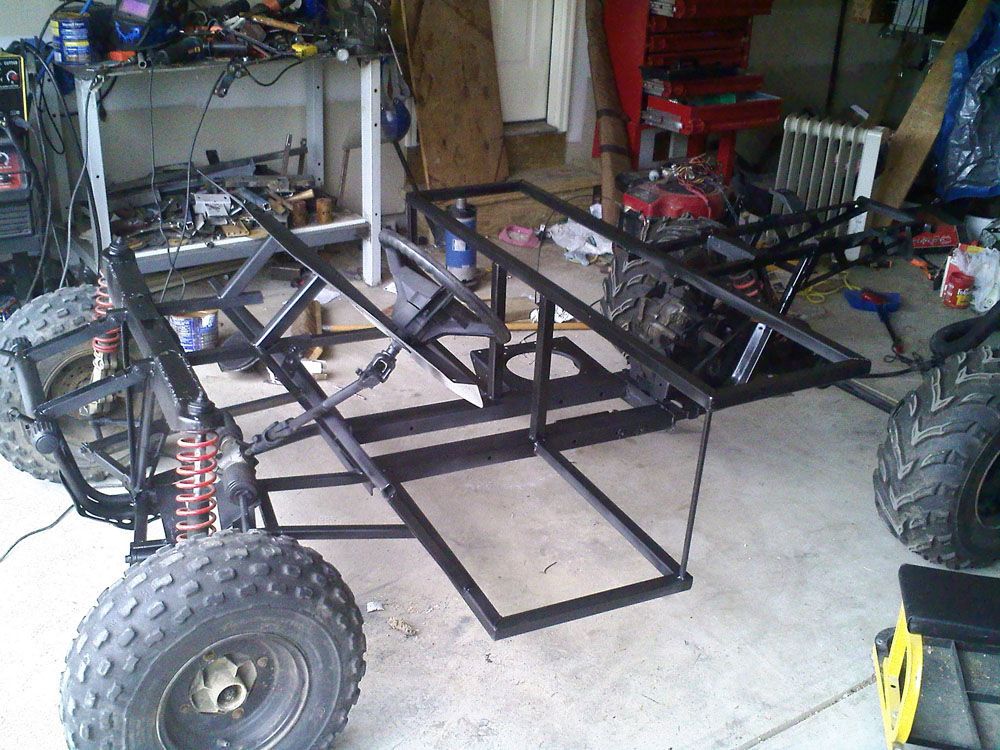 Remember that when riding an ATV it is very easy to roll over on level ground or even crash into a tree at full speed. For example, if a stump comes across in a field under tall grass, the ATV can run into it, and then the rider will fly over the steering wheel, or at least hit it.
Remember that when riding an ATV it is very easy to roll over on level ground or even crash into a tree at full speed. For example, if a stump comes across in a field under tall grass, the ATV can run into it, and then the rider will fly over the steering wheel, or at least hit it.
Never ride an ATV alone. It is best to ride with someone in a pair on two ATVs. There are a lot of situations when a partner is needed. For example, it is very difficult to put an overturned ATV on wheels, and if it covered you from above, then you won’t even be able to get out from under it alone. The second ATV can pull the first one out of the swamp or tow it to the camp in case of a breakdown.
When passing a difficult obstacle, it is better to get out of the saddle and, carefully working with the brake and accelerator, walk alongside. You should also not go too deep into the water - you can fill the motor.
Place both feet straight on the footrests and hands on the controls.
Start the engine, let it warm up. After that, holding the brake, engage the gear.
Select direction of travel.
Release the brake and slowly press the throttle with your right thumb to start moving. The speed of movement depends on how far the damper is open.
For starters, don't try to drive fast. It is better to learn how to maneuver, handle the brake system and throttle on level ground.
Turn the steering wheel in the desired direction. Tilt your upper body inward and rest your weight on the outside footboard. This will change the balance of traction between the wheels, and the turn will be made smoothly. Turns back are performed in the same way.
ATTENTION!!! ATVs are not designed to make sharp turns or turns at high speed!
If you must drive on a slippery surface, drive as carefully as possible and strictly observe the following rules:
Reduce your speed when entering a slippery surface.
Avoid sharp and sharp turns, or the ATV will skid.
When skidding, turn the steering wheel in the direction of the skid and shift your body weight forward. Never slow down during a skid.
An all-wheel drive system can make driving on slippery surfaces much easier.
Climbing up should follow a straight path.
ATVs are not designed to climb steep hills (over 25°).
When lifting, keep both feet on the footrests and shift your body weight forward.
Drive at a steady speed with the throttle open.
When climbing, you should be fully prepared for an emergency.
If the ATV has completely lost forward speed, raise yourself up and apply the front brake. If there is a complete stop, apply the rear brake as well, and then set the gear selector to park.
If the machine rolls backwards, raise yourself up and apply the front brake. After a complete stop, you can also apply the rear brake and move the gear selector to park mode.
After a complete stop, you can also apply the rear brake and move the gear selector to park mode.
ATTENTION!!! Crossing hills on an ATV is very dangerous! If possible, try to avoid hills when riding an ATV. Any incorrect action while crossing a hill can cause serious injury, or even death!!!
If you still need to cross a hill with your ATV, follow these rules:
Drive at a slow speed.
Lean your torso towards the hill to transfer the weight of your upper body towards the slope. But be sure to keep your feet on the footboards.
In order not to lose direction, the machine should be steered slightly uphill.
If the ATV begins to tip over, quickly turn the front wheel downhill or leave the vehicle immediately.
When descending a slope, you must:
Drive in a straight line.
Shift your body weight to the rear of the machine.
Drive at low speed with light brakes applied.
Know how to operate the rear auxiliary brake lever.
If the machine stalls while climbing, do not let it roll down. Do the following:
Stop and put the gear selector in park, raise yourself up.
Switch off the engine.
Get off the ATV on the side that is up. If the ATV is pointing up in a straight line, then you need to get off on the left.
Stand at the top of the machine and turn the steering wheel fully to the left.
While holding the brake lever, place the shifter in first gear and allow the ATV to circle slowly to the right until the machine is across the slope or turns slightly down.
Shift the gear selector to park and sit back on the ATV from the top side, supporting your body weight.